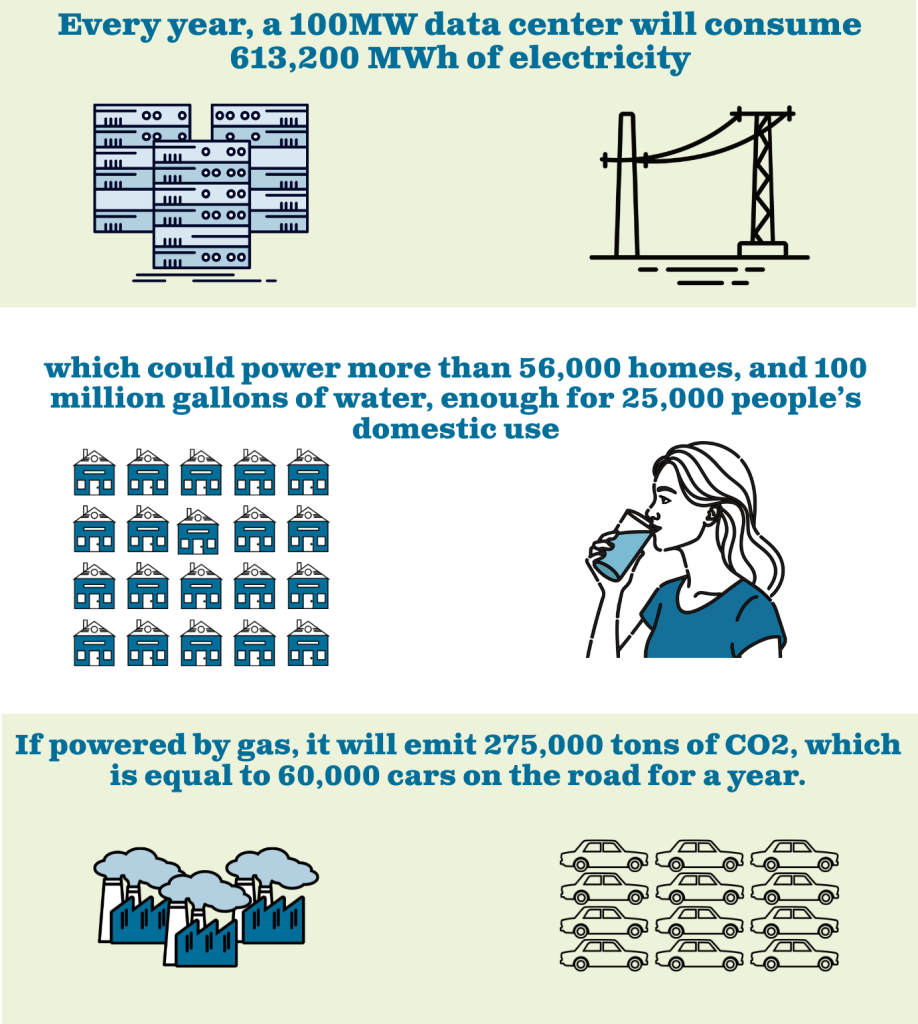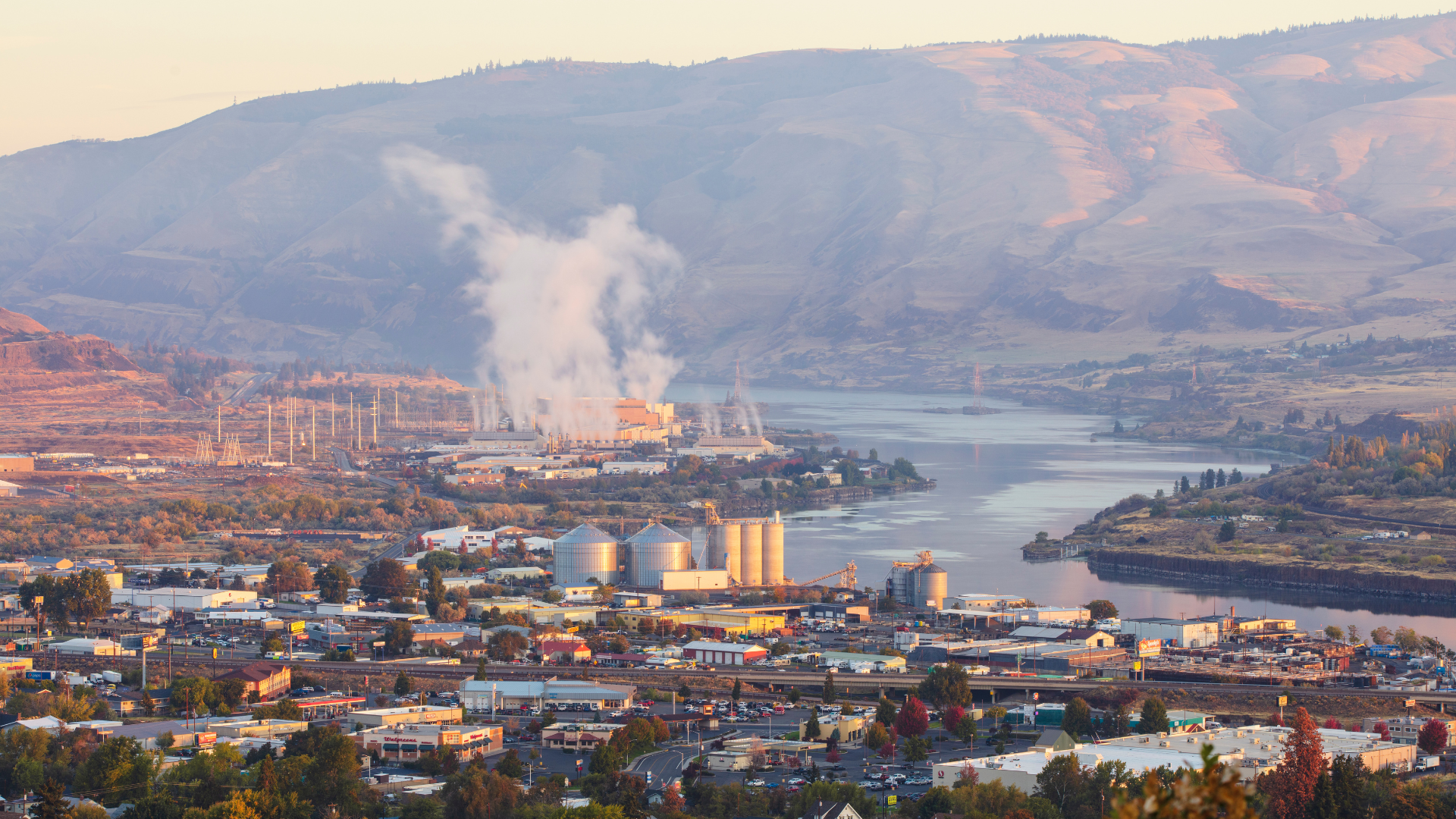Big tech is ramping up efforts to build more data centers along the Columbia
These projects come with big impacts to our climate… and big questions about water and energy consumption.
It’s hard to escape news about AI and data centers, and the enormous amount of energy and water big tech is demanding to build more facilities.
Data center development has gone largely unchecked in the PNW, making Oregon the second largest market in the US, behind only Virginia. Yet the full economic and environmental impact of data centers in the PNW is unknown.
Columbia Riverkeeper is working to address the serious threats that data centers pose to the Columbia and communities that rely on it.
Strategies for Reform
We understand, and welcome, that achieving a just energy future will require substantial changes to our region’s regulatory and physical infrastructure. This will include regulating how, if, and where data centers are sited and operated in our region.
At a minimum, we call for:
- Transparency: Annual reporting on energy and water use and job creation is necessary for responsible, sustainable, and equitable development.
- Accountability: Data center expansion must not raise electricity costs for PNW families and businesses as other ratepayers are forced to fund discounts for data centers.
- Oversight: While data center development has gone largely unchecked in the PNW, with closed-door negotiations between elected officials and tech companies and virtually zero public input, state oversight and local review is needed to evaluate impacts on neighboring communities, clean water, and climate priorities.
Make Your Voice Heard!
- In Oregon: support implementing the POWER Act
- In Washington: provide comments to the Governor’s Data Center Workgroup
Enormous Energy and Water Use
Data centers require an enormous amount of electricity and water to power and cool the processors, and range in size from a single room in an office building to massive “hyperscale” campuses. A typical size for a new data center is between 50 and 150 Megawatts (MW); AI-specialized “hyperscale” campuses can draw as much as 1 Gigawatt (GW) of electricity load.

Continued Burning of Fossil Fuels
To keep up with growing energy demand, largely from data centers, utilities have increasingly sourced dirty “unspecified” power derived from fossil fuels. Data centers may also delay retirements of gas-fired power plants and continue expanding gas infrastructure, threatening our region’s climate goals..
Wasting Resources and Undermining Hanford Cleanup
Tech giants are pursuing plans to develop small modular nuclear reactors (SMNRs) along the Columbia River to power their data centers, including at the Hanford Nuclear Site. SMNRs are a false solution that diverts funding from proven renewable energy technologies that are safer, less expensive, and faster to deploy.
Threats to Clean Water and Salmon Recovery
Technologies for keeping data centers cool contain pollutants not normally targeted for removal by municipal wastewater treatment plants. And though the Lower Snake Dams provide a small fraction of PNW energy supply, rising power demand from new data centers could squash dam removal efforts and threaten salmon recovery.
Rising Electricity Costs
Residential and commercial ratepayers are forced to fund discounted rates for data centers and are saddled with industry risks and costly infrastructure upgrades. If actual data center demand does not reach projected growth, utilities—and their ratepayers—could be stranded with expensive, unnecessary energy infrastructure, further burdening low-income communities and contributing to a growing affordability crisis across the region.





